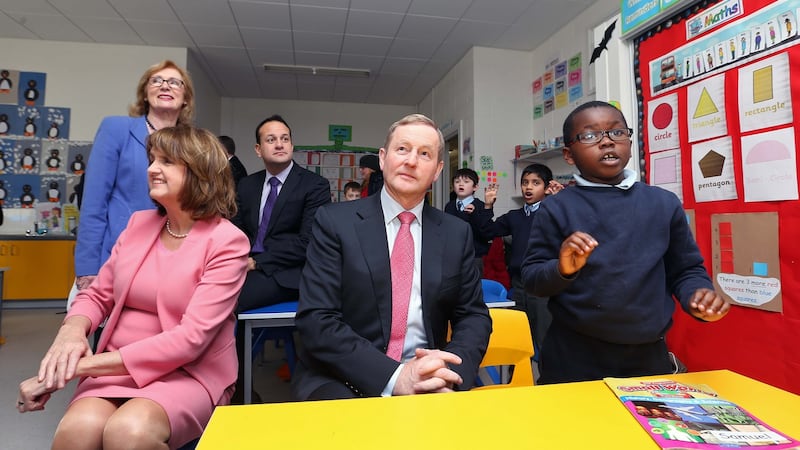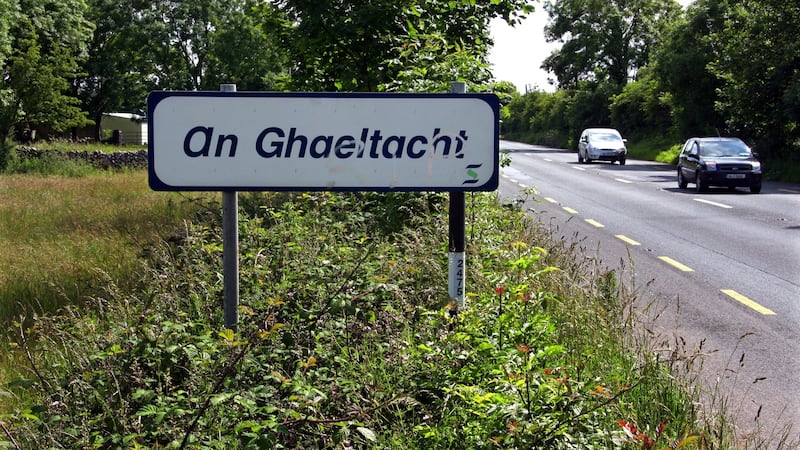At home, the children speak 51 different languages: Afrikaans, Amharic, Arabic, Bangla, Benin French, Bosnian, Cantonese, Cebuano, Dari, Estonian, Farsi, Foula, French, German, Hebrew, Hindi, Hungarian, Igbo, Ilonggo, Indonesian, Isoko, Itsekiri, Italian, Kannada, Kinyarwanda, Konkani, Kurdish, Latvian, Lingala, Lithuanian, Malay, Malayalam, Mandarin, Marathi, Moldovan, Polish, Portuguese, Romanian, Russian, Shona, Slovakian, Spanish, Swahili, Tagalog, Tamil, Ukrainian, Urdu, Vietnamese, Visayan, Xhosa and Yoruba. Where could this Tower of Babel, this crazy cacophony of tongues be? Actually, it’s in Blanchardstown. Or more precisely in a single primary school in Blanchardstown. And it’s not a Babel, or chaos, or crazy. It’s kind of wonderful.
It can be hard, when people running for public office come out with nonsense about immigrants and asylum seekers, to decide which is worse – that they genuinely believe it or that know it is false but peddle it anyway. Those who use anti-immigrant rhetoric depend on an opposition between “the people on the ground” who know how terrible everything is and the do-gooding “elites” full of airy-fairy liberal notions.
This traduces the real "people on the ground" – the neighbours and co-workers and parishoners, the GAA and soccer coaches, and the teachers who have responded so superbly to the influx of new families into a society in which the direction of migration used to go entirely the other way. It distorts the real story unfolding all over Ireland: the way communities have been able to see immigration, not only as a challenge, but also as an enrichment.
Scoil Bhríde experienced a dramatic transformation and had to cope with grossly inadequate help from the State
Consider language. Most European (not to mention African) societies are at least bilingual, if not multilingual. We’ve been, on the whole, woefully monolingual. English makes us (including me) lazy, its convenience crowding out even our own native Irish. But we’re now going through an explosion of language. Bubbling under the surface of Irish life is a great polyglot stew, a profusion of tongues unlike anything in our history. And here’s the thing we need to grasp – this is a fabulous resource for indigenous culture. It is turning a monochrome screen of words to a glorious technicolour.
Grossly inadequate
There's a brilliant description of this in a new book with a deceptively dull title, Engaging with Linguistic Diversity, by David Little and Déirdre Kirwan. Kirwan was, from 1987 to 2015, the principal of Scoil Bhríde, a primary school in one of the fastest-growing areas of Ireland, the west Dublin suburb of Blanchardstown. Like so many schools in Ireland, Scoil Bhríde experienced a dramatic transformation and had to cope with grossly inadequate help from the State. In 1994, one Bosnian girl arrived. Two years later, four more came. Then came the flood: by 2003, 20 per cent of the kids were from immigrant families; in September 2004, it was 50 per cent of the Junior Infants intake; by 2015, it was 80 per cent of all pupils in the school.

Between them, they spoke those 51 different languages at home. This linguistic torrent was being poured into a school that taught just three languages: English, Irish and (for fifth and sixth class) French. It’s a nightmare, surely, an anarchic assault on “our culture”. Except it isn’t – not least because Kirwan and her teachers rose to the challenge with generosity of spirit and a willingness to try new things.
Kids who are comfortably polylingual are much more at ease with Irish than those who live in a monolingual English world
Movingly, Kirwan, an Irish speaker, was influenced by what happened to Irish in the 19th century when English became the sole language of instruction in school and children were forced into a painful divide between the tongues spoken at home and in the classroom. She and her staff were “determined that their pupils’ home languages should not suffer the same fate as Irish”. Yet, it was equally vital for all those children that they develop fluent English in order to integrate into Irish society. They developed whole new ways of teaching, making the classroom multilingual, encouraging pupils to bring their home languages to bear on their learning of English and Irish.
Linguistic worlds
And instead of creating the tower of Babel that is often feared, this policy simply made all the kids better at languages. They became a great resource for each other, adding insights from their own linguistic worlds. Imagine a classroom in which half a dozen children are retelling an Irish legend in half a dozen other languages, translating, inquiring, playing with the infinite diversity of words. What a fabulous educational experience that must be – working-class kids getting a daily course in applied linguistics that would be hard to match at university.

And one of the beneficiaries of this approach is, rather wonderfully, the Irish language. Kids who are comfortably polylingual are much more at ease with Irish than those who live in a monolingual English world. Kirwan found that “the presence of other languages in the classroom helps them to accept Irish as one more medium of communication”. Scoil Bhríde is ranked in the top 12 per cent of primary schools nationwide for success in teaching Irish. Instead of the assault on indigenous culture evoked in the fevered imaginations of anti-immigrant zealots, such heavily immigrant schools are actually producing the Gaelgoirí of tomorrow. That’s what’s really on the ground of contemporary Ireland – and to anyone whose heart is not curdled by prejudice, it is a joy.












